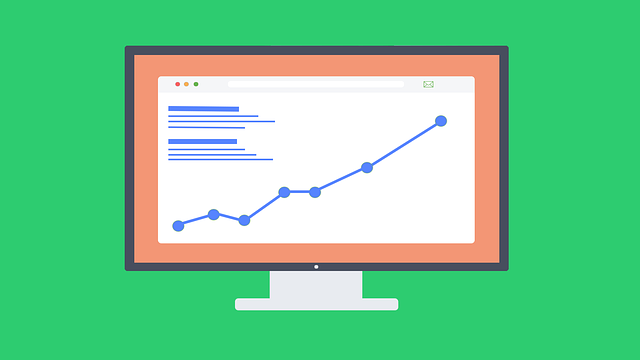
7 Steps to Conduct an Analysis of Your Competitors’ SEO Rankings to boost your Business
There are many factors to consider when trying to determine where you stand in the SEO rankings. Figuring out where you stand vis your competitors is an important part of this.
It might sound simple enough, but merely doing a search yourself and seeing who comes out first on the list won’t give you a complete picture.
There are specific things you can do to assess where various industry players stand in the rankings with a fair degree of accuracy.
They should be done in order and comprehensively for a full analysis. You’ll need to break the process down into its constituent components, and for a really professional analysis, it would be wise to hire a reputable firm to do the analysis for you.
In any case, a basic understanding of the components involved is a preliminary necessity.
1. Perform your own SEO Audit

Before you look at other companies, it is necessary to conduct your own SEO audit to make sure your page is as clean, efficient, and high-ranking as it should be. SEO audits should be all-inclusive and look at every possible aspect of a given site, from traffic to backlink strength to rank tracking.
Once you’ve done this, you will have a benchmark from which to assess your competitors’ results. It is critical that comparative analyses be conducted within a short time of one another as algorithms, criteria, and the actual results you will get are subject to frequent change.
Remember, remaining a player in the industry means staying on top of trends, and this applies to SEO, as well.
2. Figure out who your true Competitors really are

It is easy to look at one or more particular results of your competitors’ analysis and think that you’ve understood the rankings. But there can be many different aspects of your competitors’ sites that rank in different ways. They can have better backlink ratings, higher click-through rates, higher overall web traffic, or any combination of several different factors.
3. Remember: Competition means different things to different People

If you’re selling ice cream at a local mom-and-pop shop in rural Iowa, you will want to focus your research efforts on the local market. While looking at nationwide statistics might be helpful on some levels, they won’t really be instructive about your major audience.
Of course, some comparisons to ice cream shops elsewhere in the country or globally could be interesting, but you need to keep in mind that the factors influencing people’s choices can vary significantly depending on climate, socioeconomic levels, and many other factors. Again, employing the native rank tracker is critical for getting accurate results.
4. SEO Keyword Competition Analysis

The biggest criterion for keyword strength is overall search volume, or the total amount that their keywords appear in searches. This will give you a basis for analyzing the rest of their criteria.
Determine Strength by Keyword Types
Keywords can be categorized into many different types:
- High-intent keywords – these are keywords that have high “intents” of different kinds, including commercial, informational, transactional, and navigational. High commercial intent keywords, for example, are words like “buy,” “get,” etc.
- Negative keywords – these are keywords that have low search value and thereby prevent higher search-value keywords from being utilized. For example, if a company is trying to advertise tennis skirts to a target audience of athletes and uses the keywords “short skirts” rather than “tennis skirts” on its site, the word “short” is considered a negative keyword because it weakens the value of the keyword phrase.
- Long-, medium-, and short-tail keywords – These are keywords of varying levels of length and therefore specificity. Depending on what a given business hopes to sell, it will use some combination of these to try to reach its target audience. If the keywords used are not of the right level of specificity for the target audience, they will weaken the site’s SEO strength.
- Market-related keywords – There is a whole class of keywords that fall within the category of those related to marketing. These include the following:
- Market segment keywords – keywords associated with either a particular brand, category of products, or industry
- Product keywords and product-defining keywords – a product keyword is a keyword that distinguishes a particular brand, model, or type of a product from other related ones. An example would be “Ray-ban sunglasses” as opposed to simply “sunglasses.”
- Customer-defining keywords – these can be related to product-defining keywords but are more geared towards the buyers rather than the items themselves. “Youth sports jackets” is an example of a customer-defining keyword phrase.
- Competitor keywords – another factor in both your and your competitors’ results will be whether and how often you/they mention their competitors by name. In doing this, a company draws direct attention to where they stand in relation to the competition. Depending on the strength of the other factors involved, this could either be productive or counterproductive.
- Keyword gap analysis – A keyword gap analysis is a side-by-side comparison of the relative strength of your keywords versus those of your competitors. These analyses will take individual words and rank them directly against one or more competitors to see where you stand. All of these analyses can be undertaken with the right keyword tracking software or SEO software.
5. Competitor Backlink Analysis

Having strong backlinks is an important component of any site. They play a significant role in overall SEO rankings and any SEO analysis that doesn’t include them will be incomplete. Backlinks are important not only because of their relevance to a given site but also because they vary in strength according to how authoritative they are.
For example, a backlink to The New York Times is more authoritative than The Times Union in Albany due to higher domain authority and web traffic. A company can have hundreds of backlinks to insignificant sites, and they might not improve the company’s rankings at all. In short, any competitor analysis should definitely include an analysis of your competitor’s backlinks.
Competitor backlink analysis is generally broken into two parts:
- Page-level analysis – A page-level analysis will look at the backlinks of an individual page and allow you to see what a specific competitor’s links are.
- Domain-level analysis – If you’re looking to analyze more broadly the companies attached to a given domain, you can conduct a domain-level analysis. It is suggested that a domain-level analysis be carried out first in order to determine who the strongest players are in a given industry. After this, page-level analyses can be conducted.
Combining both will give you a good overall picture of where your competitors stand in terms of backlink strength.
6. Top Content Analysis

Another thing you’ll want to do is analyze the top content of your competitors’ pages so that you can compare it to your own. A primary determining factor is which content on a given page earned the highest number of click-throughs. In addition, the dates of a given site’s content are critical as frequent refreshing of posts to keep up with trends, etc. is a major factor in maintaining high traffic.
Content can also be divided into different types. If you are doing research on how your particular products compare to those of your competitors, you can do content analyses for each of the products or business aspects that contribute to both of your businesses.
Historical Data
Another useful way to determine where your competitors stand is to look at their historical traffic data. Any given company can be doing really well at some particular point in time, but that doesn’t necessarily mean that the company is stable or improving in its rankings.
There are a number of different ways that historical data can be tracked. If you have the time and human resources to do it yourself, you can utilize Google Search Console. Google Search Console looks at indexing status, search errors, and crawling visibility in analyzing what determines a given site’s data fluctuations. There are also paid services that will do this analysis for you, such as link-tracker.com.
Traffic Analysis
Traffic analysis is an analysis of the number of visits to a given site, including both organic (reached by means of relevant content) and paid search results. It is suggested that a good way to benchmark your competitors’ traffic is by starting with an analysis of your own. There are a number of ways to do this, including utilizing Google Analytics, and Alexa, and looking at various SEO dashboards.
Because the algorithms used to measure traffic are constantly changing, it is recommended that you look frequently and triangulate your methods to stay on top of the numbers as much as possible.
7. Learn from your Competitors

Perhaps the most important thing you can gain from doing a competitor analysis is an understanding of where your strengths and weaknesses lie. Not only will you be able to capitalize on your strengths, but you can learn from the strengths of your competitors and assess which areas you might employ their methods in to enhance your own.
Competitor analysis should be done regularly and across different spheres of competitors (as mentioned above, across different geographical distributions, according to different product lines, etc.). Understanding where your site stacks up vis the others is perhaps the most important element of your future growth as a company.
Author Profile
- Blogger and Educator by Passion | Senior Online Media & PR Strategist at ClickDo Ltd. | Contributor to many Education, Business & Lifestyle Blogs in the United Kingdom & Germany | Summer Course Student at the London School of Journalism and Course Instructor at the SeekaHost University.
Latest entries
 Search Engine OptimizationApril 26, 20245 Best Ways to Learn SEO as a Beginner
Search Engine OptimizationApril 26, 20245 Best Ways to Learn SEO as a Beginner Digital MarketingApril 15, 2024The Pillars of Corporate Reputation Management in the Digital Age
Digital MarketingApril 15, 2024The Pillars of Corporate Reputation Management in the Digital Age Digital MarketingApril 2, 2024Top 3 Cornerstones of Crafting the Ultimate Online Presence for Digital Mastery
Digital MarketingApril 2, 2024Top 3 Cornerstones of Crafting the Ultimate Online Presence for Digital Mastery Search Engine OptimizationMarch 21, 2024Local SEO Strategies: How to Draw in Buyers from your Digital Neighbourhood
Search Engine OptimizationMarch 21, 2024Local SEO Strategies: How to Draw in Buyers from your Digital Neighbourhood

